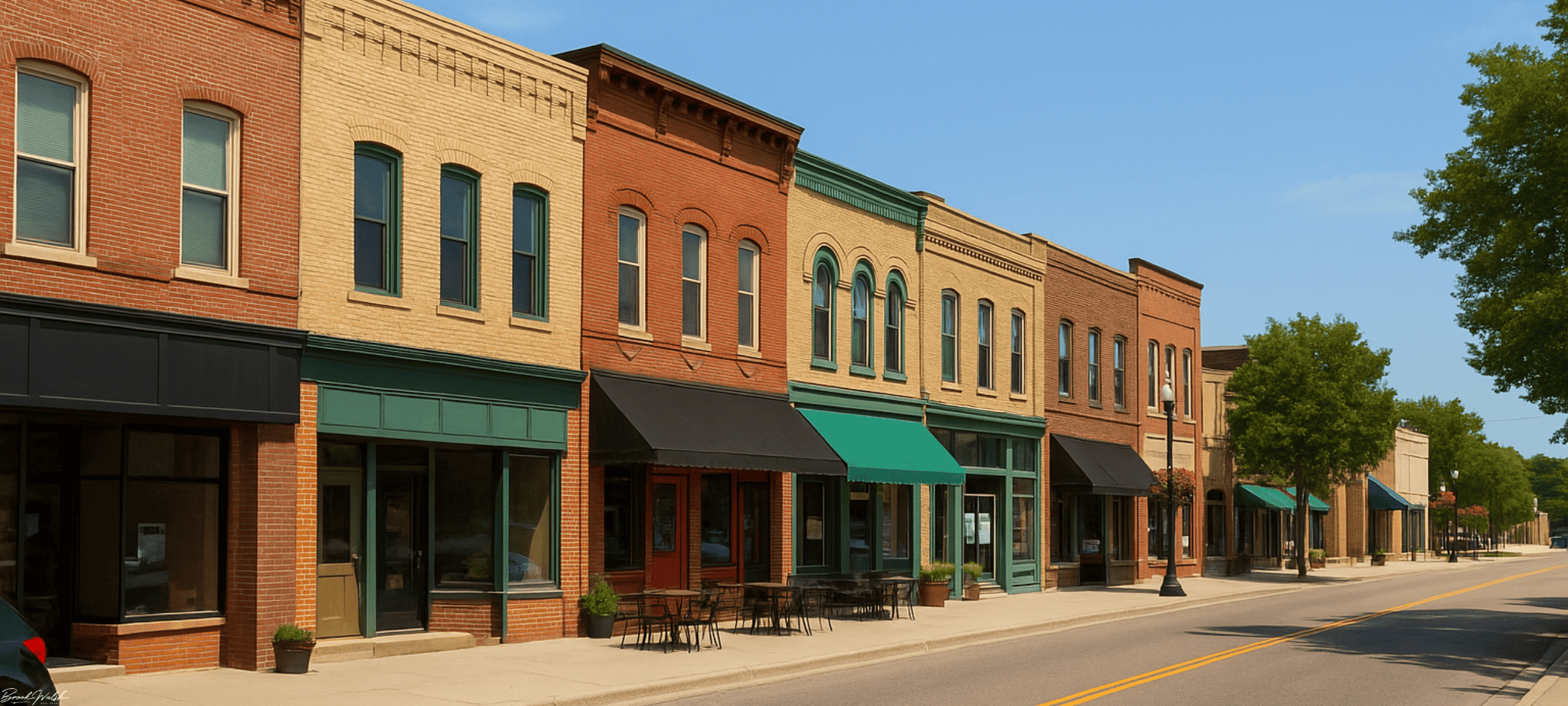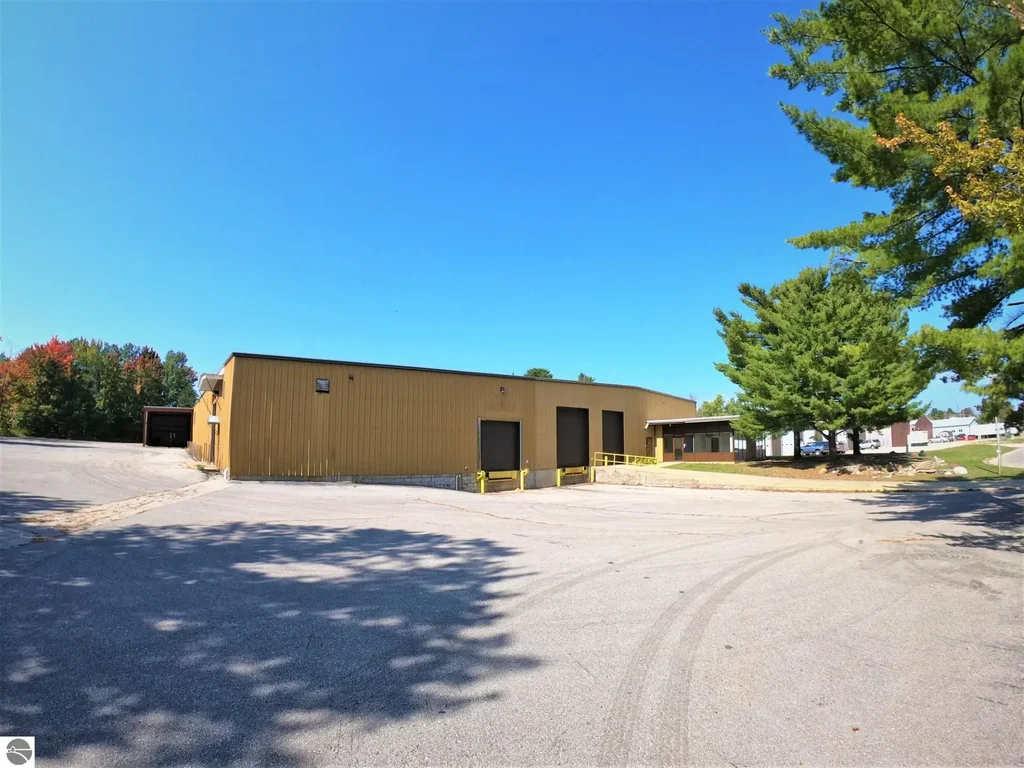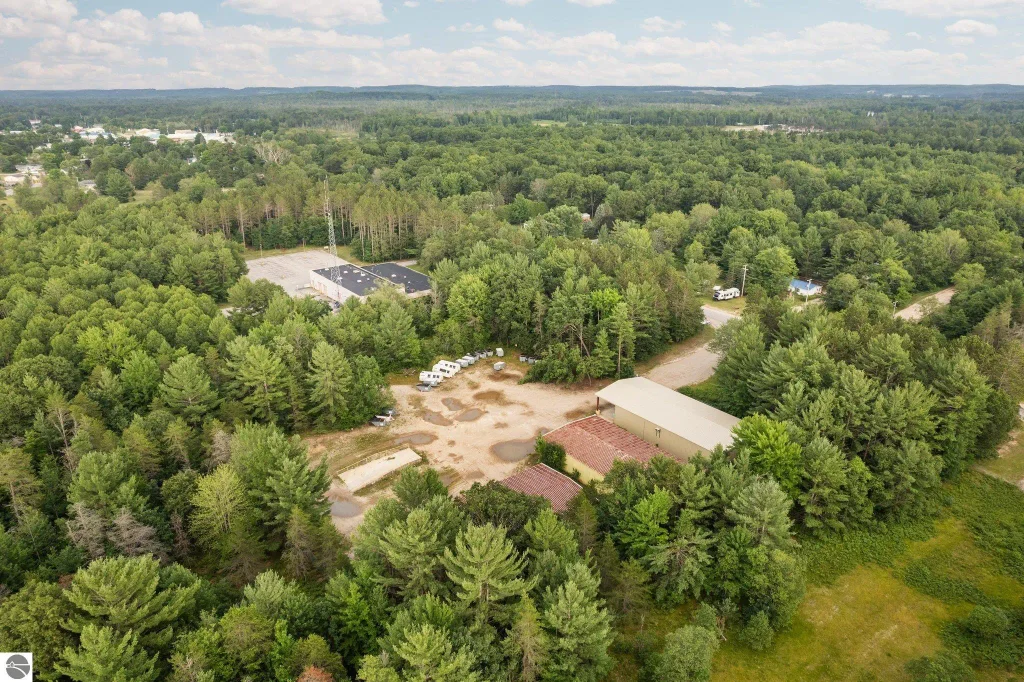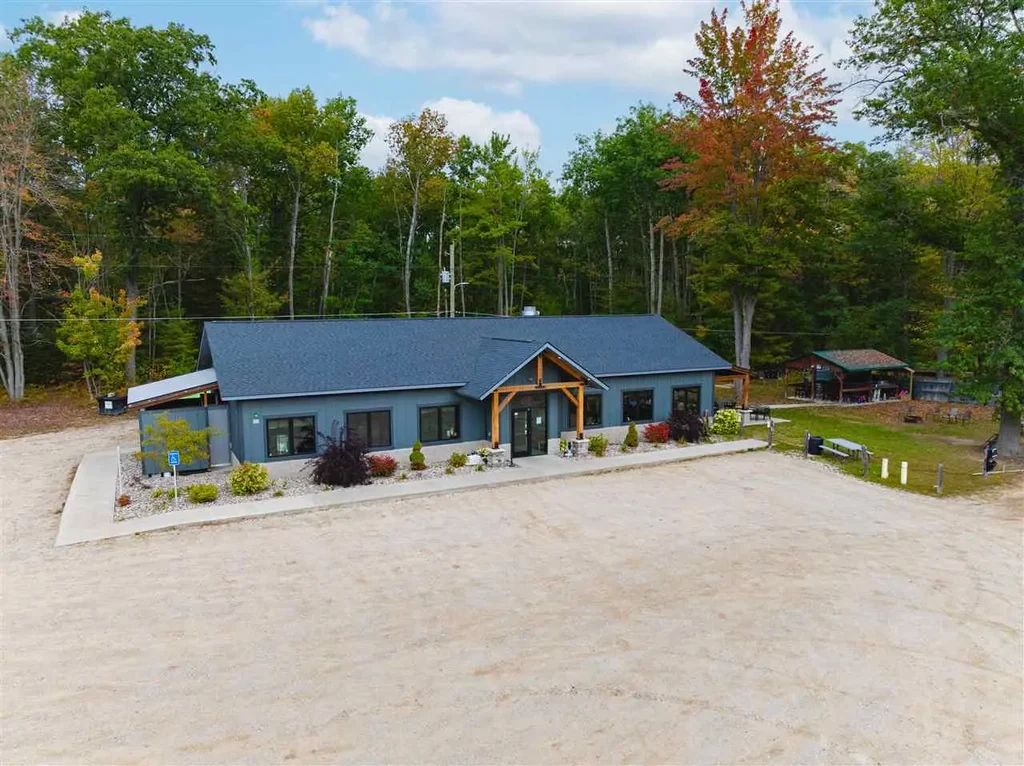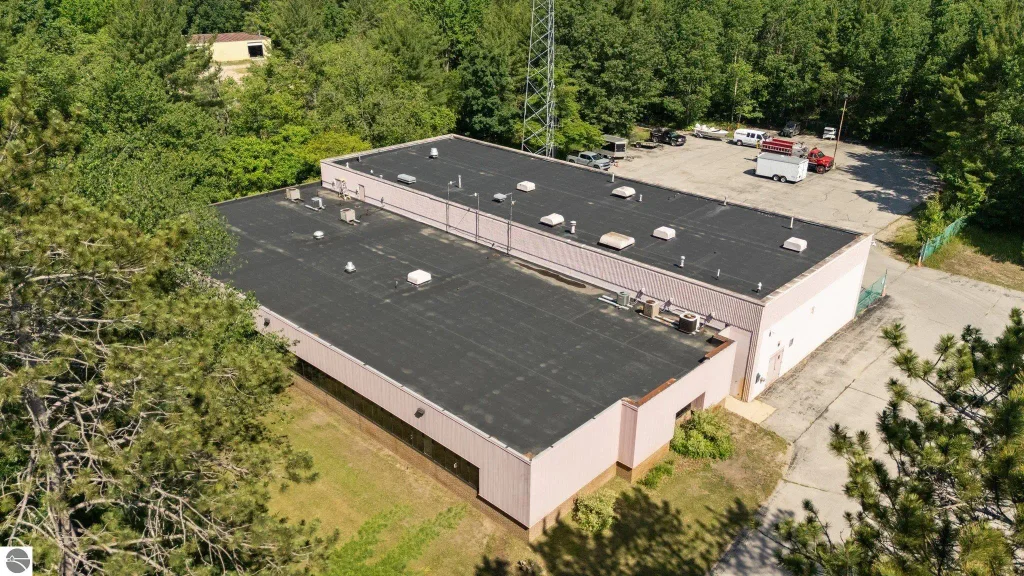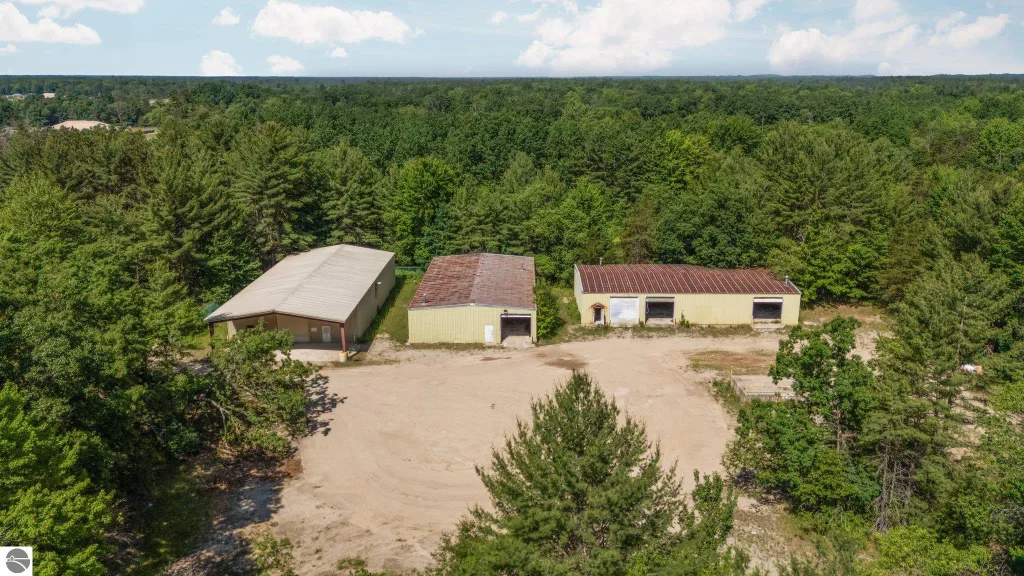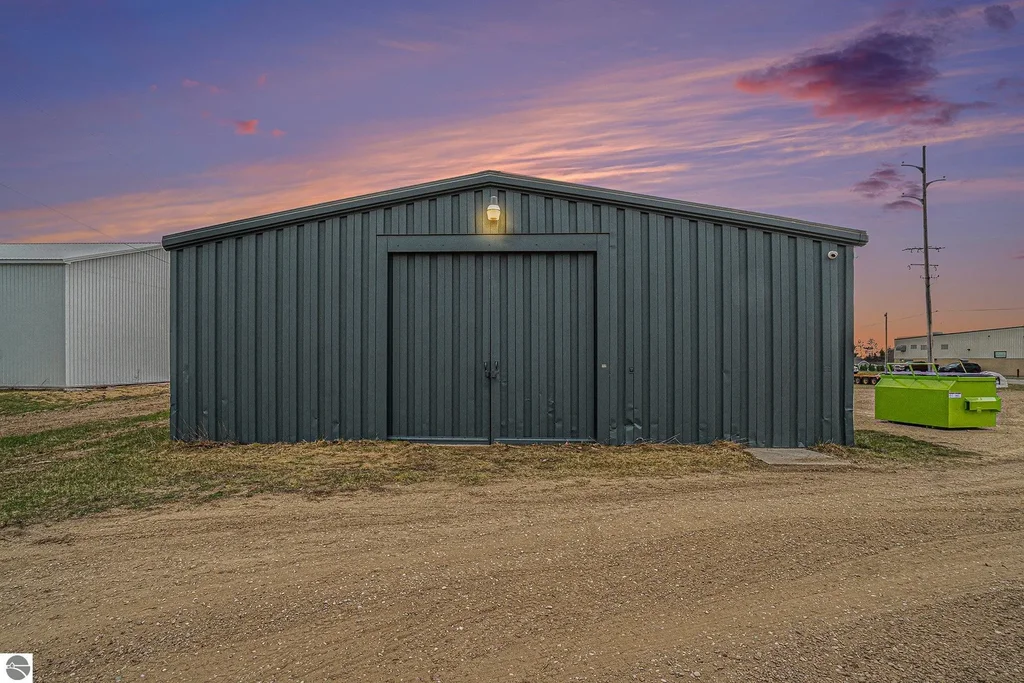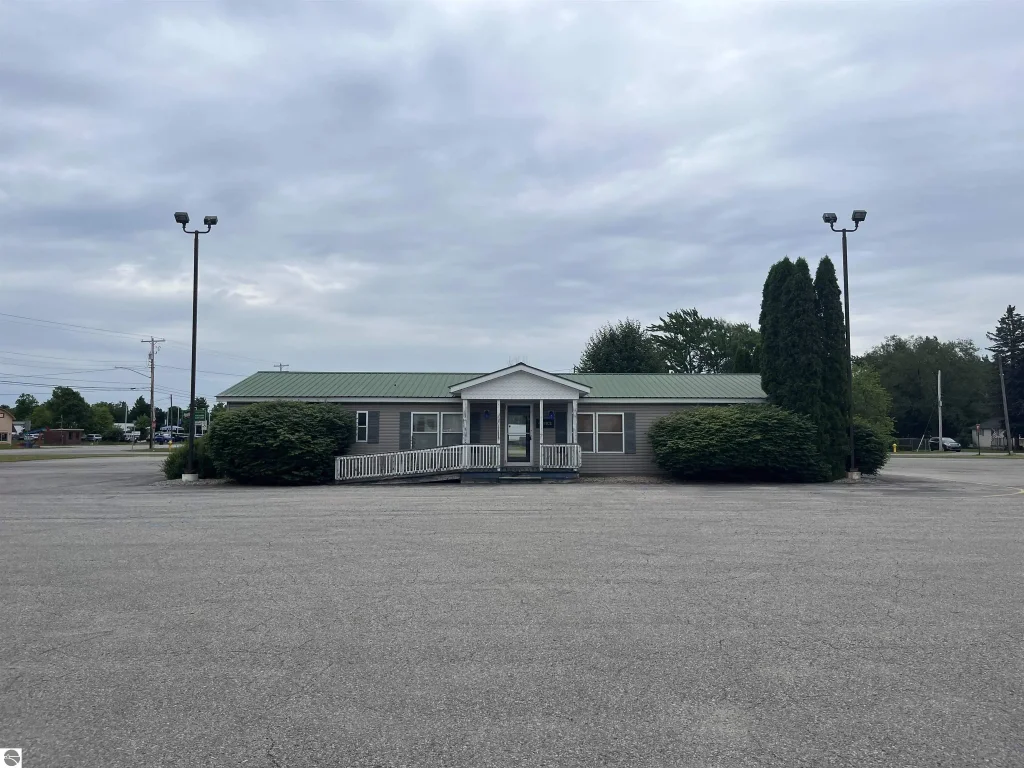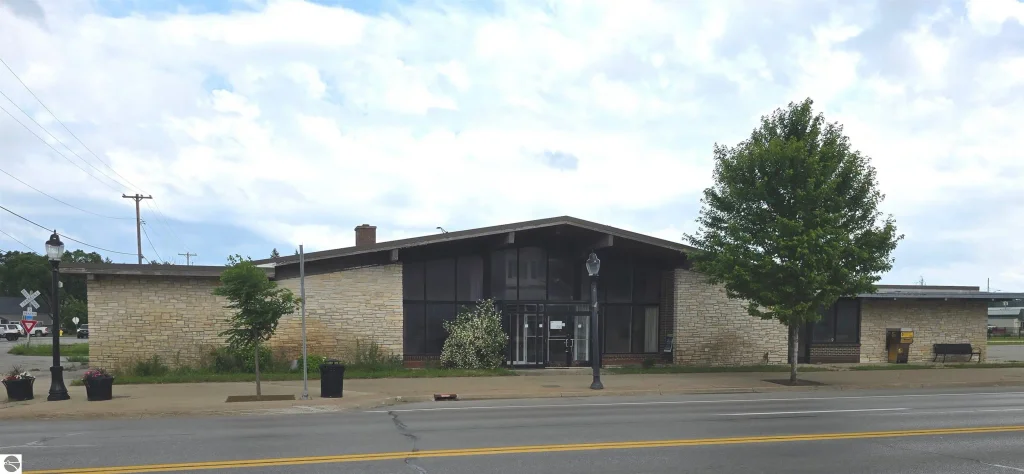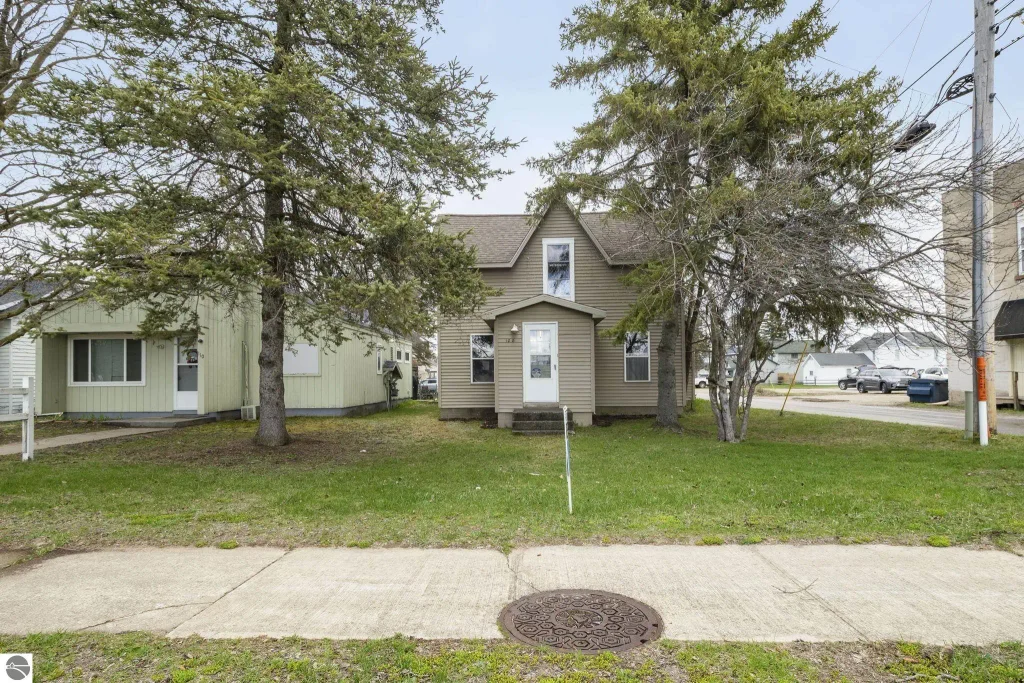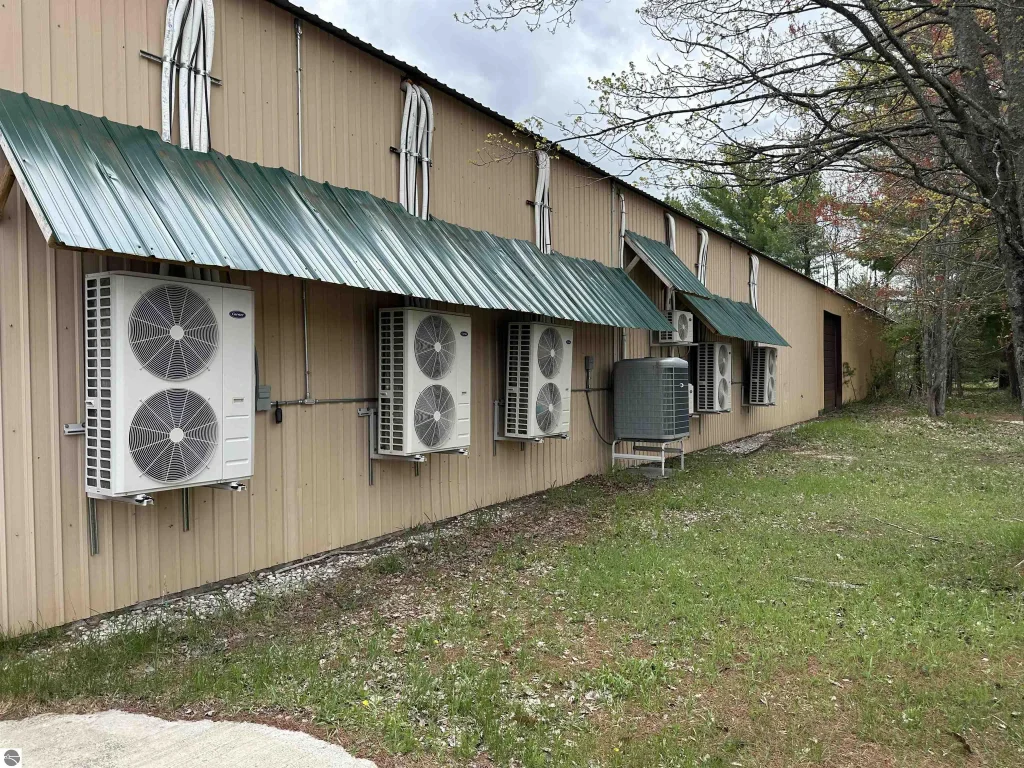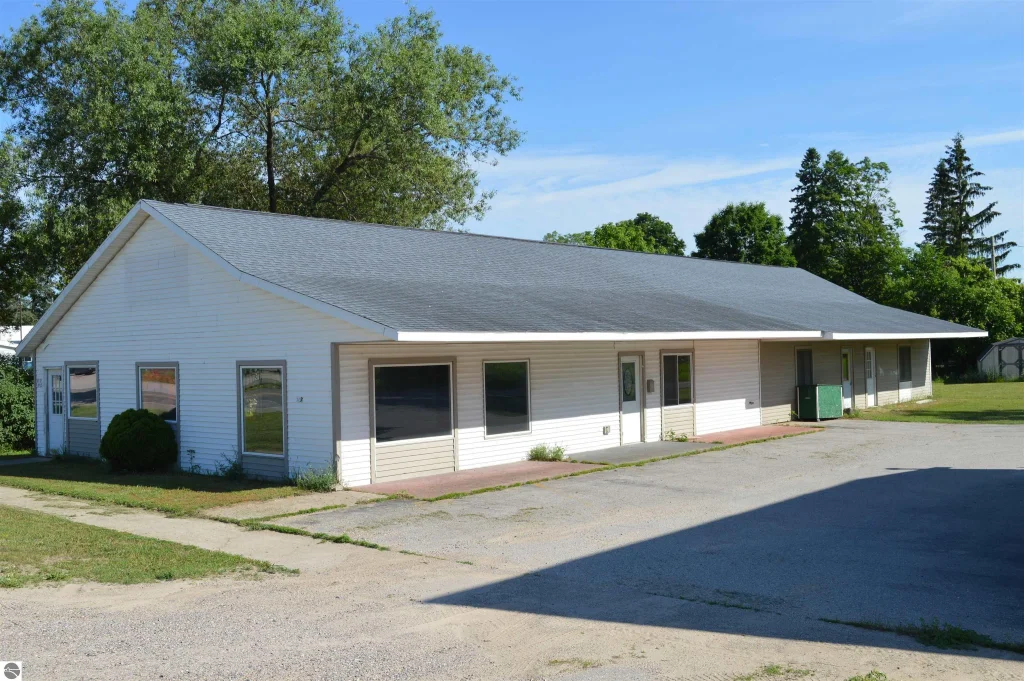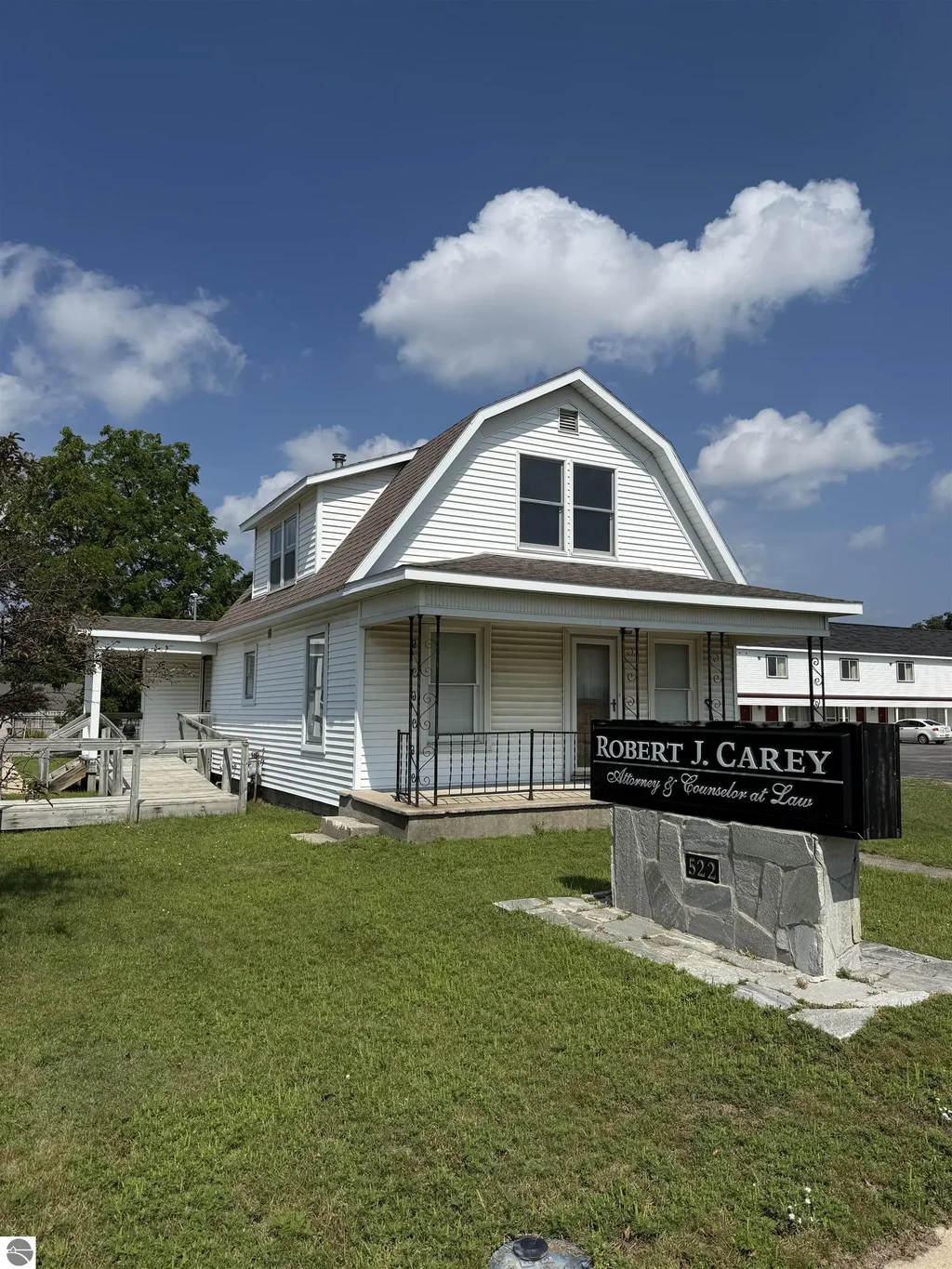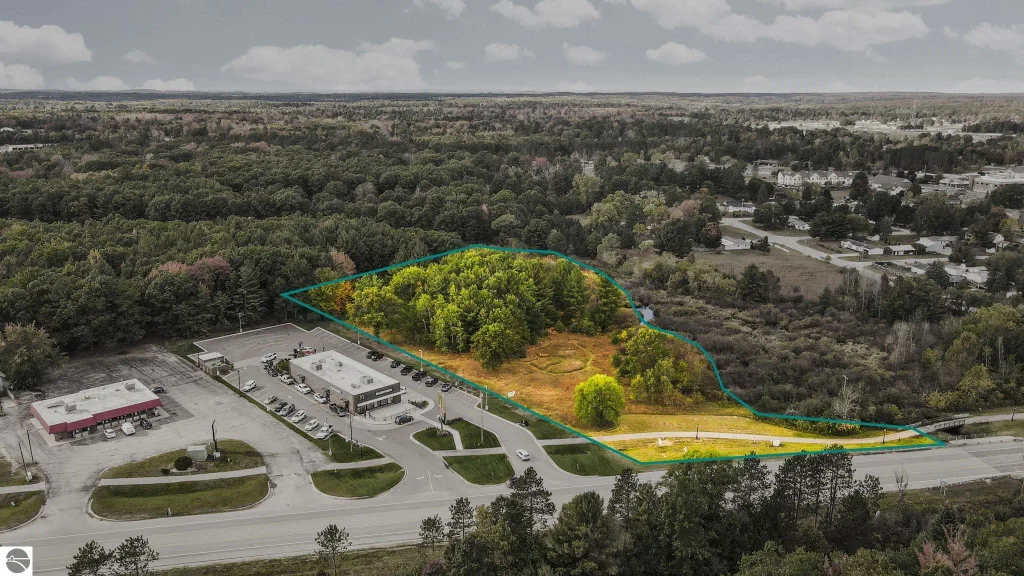Real Estate Statistics
| Average Price | $604K |
|---|---|
| Lowest Price | $66.5K |
| Highest Price | $2.6M |
| Total Listings | 13 |
| Avg. Days On Market | 191 |
| Avg. Price/SQFT | $104 |
Property Types (active listings)
Browse Kalkaska, MI Commercial Real Estate for Sale and Lease
- All Listings
- Under $100,000
- $100,000 - $200,000
- $200,000 - $300,000
- $300,000 - $400,000
- $400,000 - $500,000
- $700,000 - $800,000
- $800,000 - $900,000
- Over $1,000,000
Kalkaska, MI Commercial Real Estate for Sale and Lease: 10 Spectacular Opportunities
Investing in Kalkaska, MI Commercial Real Estate for Sale and Lease offers entrepreneurs, investors, and business owners a chance to tap into a market brimming with small-town charm and big-picture potential. Nestled in Northern Michigan’s lake-studded landscape, Kalkaska blends a welcoming community atmosphere with strategic access to year-round tourism, making it an ideal locale for retail, office, and industrial ventures.
In this guide, we'll explore ten spectacular opportunities—from historic downtown storefronts to modern warehouse spaces—alongside actionable insights to help you navigate property acquisition, leasing, and long-term returns.
1. Market Overview of Kalkaska Commercial Real Estate

Understanding the Kalkaska, MI Commercial Real Estate for Sale and Lease landscape starts with a look at the economic and demographic drivers shaping demand.
• Economic and Demographic Drivers
Kalkaska County has seen steady population growth of approximately 1% annually over the past five years, fueled by retirees, remote workers, and tourism operators seeking affordable overhead and high quality of life. Local employment spans healthcare, manufacturing, and hospitality, providing a balanced tenant base for commercial landlords.• Key Sectors: Retail, Office, Industrial
-
Retail: Main Street storefronts benefit from year-round foot traffic and seasonal events.
-
Office: Small-to-medium professional services—lawyers, accountants, tech consultants—favor flexible coworking and converted historic buildings.
-
Industrial: Light manufacturing and distribution centers have located near US-131 and M-66 corridors for efficient regional access.
• Recent Transaction Trends
Over the past 24 months, average sale prices for small retail units (1,000–3,000 sq ft) have ranged from $120–$180 per sq ft, while industrial land parcels trade around $30,000–$40,000 per acre. Lease rates average $12–$15 per sq ft NNN for retail and $6–$8 per sq ft NNN for industrial spaces, presenting healthy yields versus regional peers.
2. Key Neighborhoods and Property Types

Kalkaska’s diverse neighborhoods cater to an array of commercial needs—and investment goals.
• Downtown Kalkaska: Historic Charm
Character-rich brick buildings host boutique shops, cafes, and professional offices. Properties here often qualify for façade grants and historic-preservation tax credits, boosting ROI.
• East Kalkaska: Retail Hubs
Clustered along M-66, this corridor features strip centers, big-box anchors, and service-oriented businesses, delivering high visibility and steady consumer traffic.
• Industrial Parks and Warehouse Districts
Located near major highways, these parks offer build-to-suit facilities, ample parking, and rail spurs—perfect for logistics firms and light-manufacturing ventures.
• Mixed-Use Developments
Emerging projects blend ground-floor retail with upstairs residential lofts, attracting tenants who value live-work flexibility and walkable amenities.
3. Investment Strategies and ROI Potential

From value-add flips to buy-and-hold portfolios, Kalkaska’s commercial real estate market accommodates diverse investor strategies.
• Value-Add Opportunities
Refurbishing outdated storefronts or converting underutilized warehouse lofts can yield 20–30% increases in net operating income within two years.
• Long-Term Hold vs. Flip
-
Hold: Stable cash flow from NNN leases in retail and office spaces.
-
Flip: Quick-turn profits through light renovations and lease-up of vacant units.
• Financing Options and Incentives
Local banks and credit unions partner with the SBA for 504 and 7(a) loans, while MI-DEQ grants support brownfield redevelopment, lowering upfront costs.
• Risk Management in a Small-Town Market
Diversify across sectors—retail, office, industrial—to insulate against cyclical downturns. Establish reserve funds for maintenance and vacancy to preserve cash flow.
4. Leasing Process and Tenant Considerations
Effectively leasing your commercial space in Kalkaska hinges on understanding lease structures and tenant profiles.
• Lease Structures: NNN, Gross, Modified Gross
-
Triple Net (NNN): Tenant covers taxes, insurance, and CAM—ideal for passive landlords.
-
Gross: Landlord assumes operating costs—simpler but higher risk.
-
Modified Gross: Shared expense model tailored to property and tenant needs.
• Evaluating Tenant Creditworthiness
Require personal or corporate guarantees, review financial statements, and consider leasing to local businesses with proven track records for reduced default risk.
• Marketing Your Space Effectively
Leverage MLS syndication, LoopNet, and local platforms like the Kalkaska County Chamber website (https://www.kalkaskachamber.com) to showcase listings with professional photos and virtual tours.
• Working with Local Brokers and Online Platforms
Partnering with a dedicated Kalkaska broker ensures access to off-market deals and negotiation leverage, while online marketplaces broaden your reach to out-of-town prospects.
5. Zoning, Regulations, and Approvals

Compliance is crucial—know the rules before you invest or lease.
• Commercial Zoning Classifications
Kalkaska’s zoning ordinance divides land into CC (Central Commercial), BC (Business Commercial), HC (Highway Commercial), and LI (Light Industrial) districts.
• Permitting and Approvals
Building permits, site-plan reviews, and sign permits are processed by the Township Zoning Administrator. Allow 4–6 weeks for typical approvals.
• Environmental and Historic Preservation
Brownfield assessments and historic-district overlays may require additional reviews—but can unlock grant funding and tax incentives.
6. Financing and Tax Benefits

Capitalize on local and federal programs to enhance cash flow.
• SBA Loan Programs
504 loans for owner-occupied properties offer up to 90% financing with 10-year fixed rates as low as 3.75%.
• Tax Abatements and Credits
Local TIF districts and rehabilitation abatements can defer up to 50% of property taxes for 10–12 years.
• Local and State Incentives
Workforce training grants, energy-efficiency rebates, and community development block grants (CDBG) bolster project economics and tenant appeal.
7. Development and Redevelopment Opportunities
Kalkaska’s evolving landscape presents options from ground-up builds to adaptive reuse.
• Adaptive Reuse Projects
Converting historic storefronts into coworking or loft offices preserves character and qualifies for Historic Tax Credits.
• New Construction Trends
Speculative light-industrial shells with clear-span layouts and efficient loading docks attract regional logistics firms.
• Infrastructure Improvements
Township investments in streetscape and broadband expand development corridors and support higher-value uses.
8. Broker and Advisory Services

Expert guidance accelerates deal flow and mitigates pitfalls.
• Choosing the Right Commercial Broker
Select a broker with local track record, sector expertise, and strong community ties to secure best-in-market terms.
• Due Diligence and Valuation
Conduct property condition assessments (PCA), environmental site assessments (ESA), and third-party appraisals before closing.
• Legal and Accounting Support
Engage attorneys familiar with Michigan commercial real estate law and CPAs experienced in partnership structures to optimize tax outcomes.
9. Case Studies: Successful Deals in Kalkaska
Real-world examples illustrate potential returns and best practices.
• Turnkey Retail Acquisition
A 2,400 sq ft Main Street storefront purchased at $160 per sq ft, renovated for $50,000, now leases at $18 per sq ft NNN—yielding a 9% cap rate.
• Office Conversion Success
Historic bank building repurposed into 4 office suites, each leased at $1,200 month; renovation costs recouped in under 24 months.
• Industrial Park Expansion
Constructed a 15,000 sq ft speculative warehouse, achieving full lease-up within six months to a regional distributor.
10. Future Outlook and Growth Drivers
What’s next for Kalkaska, MI Commercial Real Estate for Sale and Lease?
• Infrastructure and Transportation Plans
Pending MDOT upgrades to M-66 and pedestrian-friendly streetscapes will boost foot traffic and property values.
• Tourism and Hospitality Impact
Growing eco-tourism around Torch Lake and Sleeping Bear Dunes drives demand for visitor-oriented retail and services.
• Technology and Remote-Work Trends
Accelerating remote-work adoption spurs demand for suburban coworking spaces and flexible office leases.
Frequently Asked Questions

-
What is the average cap rate for Kalkaska commercial properties?
A. Cap rates typically range from 7–9% for retail and office, and 8–10% for industrial assets, depending on location and tenant strength. -
Are there incentives for historic building renovations?
A. Yes. Projects in designated historic districts can qualify for federal and state Historic Tax Credits covering up to 45% of renovation costs. -
How do lease rates in Kalkaska compare to Traverse City?
A. Lease rates in Kalkaska are approximately 20–30% lower than Traverse City, offering greater cash-flow potential for investors. -
Can out-of-state investors finance properties in Kalkaska?
A. Absolutely. Many Michigan banks and credit unions work with non-resident investors, especially when backed by solid business plans and equity contributions. -
What due diligence is required before closing?
A. A comprehensive due diligence package includes PCAs, ESAs, title reviews, zoning verifications, and lease audits to confirm income and expense assumptions. -
Where can I find off-market listings in Kalkaska?
A. Partnering with local brokers, attending Chamber events, and networking with community leaders often uncovers exclusive opportunities not listed publicly.
Conclusion
Kalkaska, MI commercial real estate offers a compelling blend of affordability, diversified tenant demand, and growth potential driven by tourism and remote-work trends. Whether you’re acquiring a historic storefront, leasing a modern warehouse, or developing a mixed-use project, Kalkaska’s market fundamentals and incentive programs position investors and business owners for long-term success.
For more information on Kalkaska’s business climate, visit the Kalkaska County Chamber of Commerce: https://www.kalkaskachamber.com
Continue your Northern Michigan commercial real estate search in the communities below or contact Brook Walsh to help you with your search.
Browse Other Communities
- Alanson, MI Commercial Real Estate
- Alpena, MI Commercial Real Estate
- Atlanta, MI Commercial Real Estate
- Bay Harbor, MI Commercial Real Estate
- Beaver Island, MI Commercial Real Estate
- Bellaire, MI Commercial Real Estate
- Beulah, MI Commercial Real Estate
- Brutus, MI Commercial Real Estate
- Boyne City, MI Commercial Real Estate
- Boyne Falls, MI Commercial Real Estate
- Cadillac, MI Commercial Real Estate
- Carp Lake, MI Commercial Real Estate
- Central Lake, MI Commercial Real Estate
- Charlevoix, MI Commercial Real Estate
- Cheboygan, MI Commercial Real Estate
- Cross Village, MI Commercial Real Estate
- East Jordan, MI Commercial Real Estate
- Elk Rapids, MI Commercial Real Estate
- Ellsworth, MI Commercial Real Estate
- Empire, MI Commercial Real Estate
- Fife Lake, MI Commercial Real Estate
- Frankfort, MI Commercial Real Estate
- Gaylord, MI Commercial Real Estate
- Glen Arbor, MI Commercial Real Estate
- Grayling, MI Commercial Real Estate
- Harbor Springs, MI Commercial Real Estate
- Hillman, MI Commercial Real Estate
- Honor, MI Commercial Real Estate
- Houghton Lake, MI Commercial Real Estate
- Indian River, MI Commercial Real Estate
- Interlochen, MI Commercial Real Estate
- Johannesburg, MI Commercial Real Estate
- Kalkaska, MI Commercial Real Estate
- Kewadin, MI Commercial Real Estate
- Kingsley, MI Commercial Real Estate
- Lake Ann, MI Commercial Real Estate
- Lake City, MI Commercial Real Estate
- Leland, MI Commercial Real
- Levering, MI Commercial Real Estate
- Lewiston, MI Commercial Real Estate
- Mackinac Island, MI Commercial Real Estate
- Mackinaw City, MI Commercial Real Estate
- Manton, MI Commercial Real Estate
- Manistee, MI Commercial Real Estate
- Maple City, MI Commercial Real Estate
- Northport, MI Commercial Real Estate
- Onaway, MI Commercial Real Estate
- Onekama, MI Commercial Real Estate
- Pellston, MI Commercial Real Estate
- Petoskey, MI Commercial Real Estate
- Rogers City, MI Commercial Real Estate
- Roscommon, MI Commercial Real Estate
- Suttons Bay, MI Commercial Real Estate
- Tawas City, MI Commercial Real Estate
- Thompsonville, MI Commercial Real Estate
- Topinabee, MI Commercial Real Estate
- Traverse City, MI Commercial Real Estate
- Vanderbilt, MI Commercial Real Estate
- Walloon Lake, MI Commercial Real Estate
- Williamsburg, MI Commercial Real Estate
- Wolverine, MI Commercial Real Estate

Start searching for your dream home now.
When it comes to convenience, our site is unparalleled. Whether you're in the comfort of your home, or on the go.
Our site works flawlessly on multiple devices so you can find the information you need.

